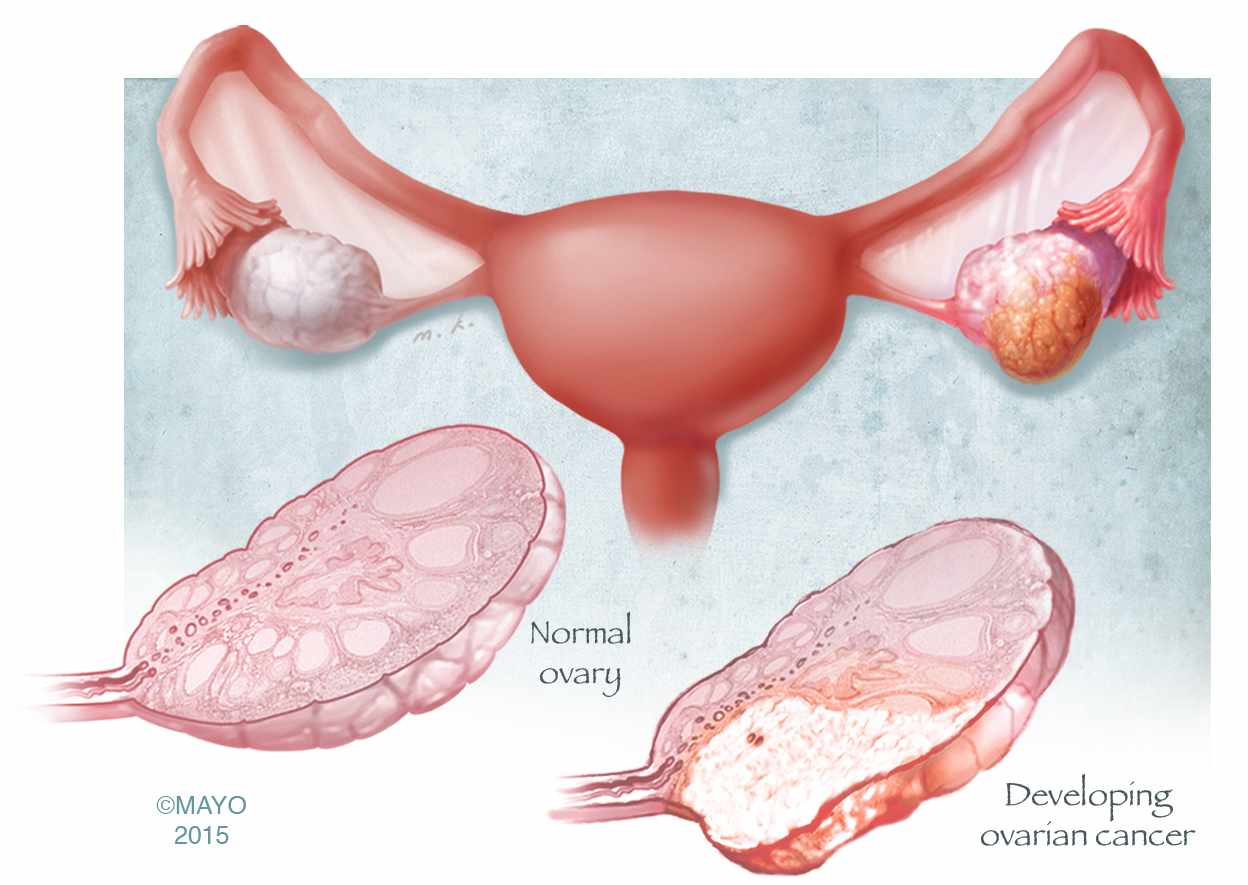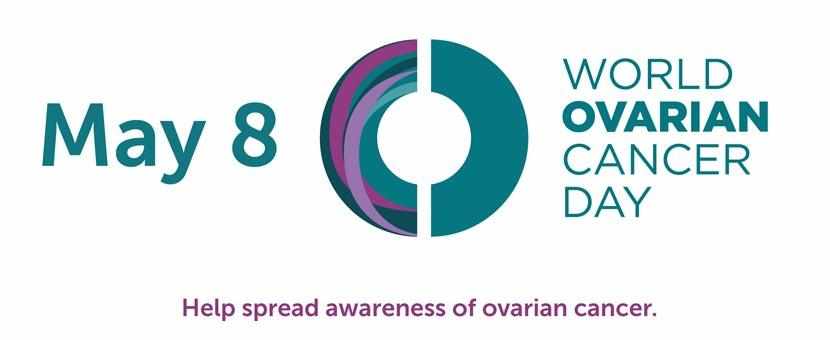-
Cancer
World Ovarian Cancer Day
 Ovarian cancer often goes undetected until it has spread within the pelvis and abdomen. At this late stage, ovarian cancer is more difficult to treat and is frequently fatal. World Ovarian Cancer Day is designed to heighten awareness and encourage women to look for early symptoms of ovarian cancer. The article below was previously published on the Mayo Clinic News Network, September 14, 2016.
Ovarian cancer often goes undetected until it has spread within the pelvis and abdomen. At this late stage, ovarian cancer is more difficult to treat and is frequently fatal. World Ovarian Cancer Day is designed to heighten awareness and encourage women to look for early symptoms of ovarian cancer. The article below was previously published on the Mayo Clinic News Network, September 14, 2016.
_________________________________________________
According to the Centers for Disease Control and Prevention, more than 20,000 women in the U.S. are diagnosed with ovarian cancer each year.
There are several types of ovarian cancer, which can include cancer of the ovaries, fallopian tubes and the lining of the peritoneum. While anyone can be at risk, ovarian cancer is most common in women over age 50 and those women who are known carriers of the BRCA 1 and BRCA 2 genes.
“The majority of ovarian cancer is sporadic but it is the fifth-leading cause of cancer deaths, due in part to the challenges with early diagnosis,” says Dr. Carrie Langstraat, gynecologic surgeon at Mayo Clinic.
Common symptoms include:
- Abdominal bloating or stomach ache
- Back pain
- A feeling of fullness after eating
- Bowel changes
“These are common symptoms that women often chalk up to other things and then they aren’t diagnosed until the cancer has progressed,” Dr. Langstraat says. “I always encourage women to follow up with their physician if their symptoms persist. The earlier we can diagnose ovarian cancer, the better we can treat it.”
Screening and diagnosis
Ultrasounds and a blood test, known as a CA 125, may be useful in helping to determine a diagnosis. However, Dr, Langstraat says, there is not a great screening tool for ovarian cancer.
“For women with BRCA 1 or BRCA 2 mutations, who are at higher risk for ovarian cancer, a CA 125 test may be effective in looking for early signs," she explains. "But overall, it is not accurate enough to use for ovarian cancer screening in all women since other things, including menstruation, can increase the CA 125 level. We would like to see a better screening testing for everyone."
Watch: Dr. Lanstraat gives an overview of ovarian cancer.
Journalists: Broadcast-qualtiy sound bites with Dr. Langstraat are in the downloads.
MEDIA CONTACT: Cynthia Weiss, Mayo Clinic Public Affairs, 904-953-0746, newsbureau@mayo.edu
Advances in care
Due to the nature of the disease, Dr. Langstraat notes that a majority of women have a recurrence. “But new treatments are coming down the line that will hopefully contribute to a decreased risk of recurrence,” she says.
Several clinical studies are underway looking at vaccines designed to prevent the recurrence of ovarian cancer.
“Our hope is that soon we will have a better screening test for everyone and then be able to cure more patients up front," says Dr. Langstraat. "But in the meantime, I tell my patients to stay vigilant and be an advocate for yourself.”
Read related articles about ovarian cancer:
- Mayo Clinic Minute: Ovarian Cancer Genes
- Mayo Clinic Minute: Could the Pill Help Ovarian Cancer Patients?
- Liquid Biopsies Offer Hope for Earlier Treatment, Better Tracking of Ovarian Cancer
- Investigating Surgery for Women at High Risk of Breast and Ovarian Cancer
- Ovarian removal to prevent ovarian cancer should not be an option for most premenopausal women







